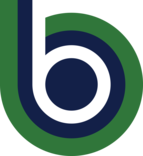About the Title II Rule — Accessibility
Background
Public entities often deliver services and programs through websites and mobile apps, which can create access barriers for people with disabilities when not designed with accessibility in mind. For example, blind individuals may rely on screen readers to interpret visual information on a website. However, if a website lacks alternative text to describe the image, these users cannot access publicly available information. The new rule aims to ensure that all people with disabilities have full and equal access to public entities services, programs, and activities available on mobile apps and websites.
Key Components of the Rule
Requirements
Public entities shall ensure that web content and mobile apps made available directly or through contractual, licensing, or other arrangements, are readily accessible and usable by individuals with disabilities.
Technical Standard
Public entities shall comply with the technical standard set by the Web Content Accessibility Guidelines (WCAG) Version 2.1, Level AA for web content and mobile apps. Public entities are required to adhere to these standards for all web and mobile content available to the public or used in services, programs, and activities.
Essential Definitions
- Web Content: The information and sensory experience communicated to the user by means of a user agent, including code or markup that defines the content’s structure, presentation, and interaction. Examples of web content include text, images, sounds, videos, controls, animations, and conventional electronic documents.
- Conventional Electronic Documents: Web content or content in mobile apps that is in the following electronic file formats: Portable document formats (“PDF”), word processor file formats, presentation file formats, and spreadsheet file formats.
- Mobile applications: Software applications downloaded and designed to run on mobile devices, such as smartphones and tablets.
Exceptions
In limited situations, some kinds of web and mobile app content may not have to meet the technical standard. The DOJ fact sheet has more details on each of these exceptions:
- Archived web content: Content not currently used or altered since being archived by a public entity, and kept only for reference, research, or record-keeping purposes.
- Preexisting conventional electronic documents: Documents available on a website or mobile app before the date of compliance.
- Third-party content: Content posted by third parties, unless the third party is posting due to contractual, licensing, or other arrangements with the public entity.
- Individualized password-protected documents: Password-protected or otherwise secured documents about a specific person, property, or account.
- Preexisting social media posts: Social media posts made before the date of compliance.
Compliance Timeframe
Public entities with populations of 50,000 or more persons must comply with the federal regulations by April 24, 2026. Because Big Bend serves a geographical area including Grant and Adams Counties and the Odessa School District in Lincoln County, SBCTC has advised that this is our compliance deadline.

